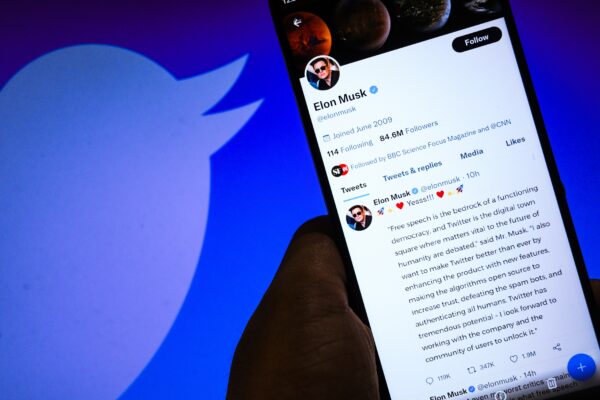Call it an X-odus: In the week following the election, more than 1 million mostly left-leaning people joined Bluesky, a social media network founded by Twitter founder Jack Dorsey. Meta’s Threads also has reported growth in recent months as more users are seeking an alternative to Elon Musk’s right-leaning X.

These shifts create challenges for brands that have traditionally used social media to engage customers, reach new audiences, and build trust and loyalty.
“If there is one thing that is constant in marketing, it’s that things are constantly changing,” said Michael Wall, a professor of practice in marketing at Olin Business School at Washington University in St. Louis. “Markets, consumer preferences and social media dynamics are continuously evolving.
“To succeed, we must proactively track these shifts, be prepared to adapt and build processes that allow us to stay agile — yet all without losing sight of our core purpose and values as a brand.”
Since Musk’s takeover of Twitter, now X, many brands have decreased or cut marketing spending on the site. Will more follow? And how can these brands harness the growing and increasingly polarized social media landscape to meet their business objectives? Below, Wall answers these questions and more.
With social media becoming increasingly fragmented, what challenges does this create for marketers?
Over the past five years, two factors have reshaped social media dynamics. First, algorithms increasingly prioritize content based on users’ interests, ‘learning’ from their behavior to keep them engaged. Second, many user segments are migrating to platforms that align with their views and ideals. Together, these changes have created a more fragmented social media landscape, where brands face the challenge of connecting with diverse audiences.
This is particularly difficult for brands with consumers who may not align socially but do within their industry or product category. Brands must overcome the challenge of connecting with fragmented audiences whose social media preferences and platform choices reflect diverse — and sometimes conflicting — values and interests. This requires brands to balance messaging that resonates across different segments while remaining authentic and aligned with their identity.
What advice do you have for businesses as they rethink their social media policies, practices and paid advertising?
The short answer: Ensure decisions are guided by what their target customer segments care most about, coupled with the promise they have made to those customer segments. In other words, what the brand cares most about. Beyond that, they must develop a multiplatform strategy. There is no one-size-fits-all approach to social media channels. Consumers have different reasons for engaging on them, have different expectations and respond to brand actions based on those norms.
Why have so many companies left X, in particular?
The reasons for leaving X differ for various companies. Some have left due to concerns about content moderation changes, controversial leadership and an environment perceived as increasingly polarized or hostile. Others have exited because they believe the platform no longer aligns with what their target customers care most about. Additionally, some advertisers no longer see the returns they once did on the platform.
Ultimately, the decision to allocate budget to one channel versus another depends on its ability to deliver the return on investment needed against goals. Brands continuously evaluate such opportunities. For example, Reddit has emerged as a powerful new player in the digital space, as have platforms like Threads and Bluesky.
Kamala Harris’ campaign was very engaged on X despite Elon Musk’s support of Trump’s campaign. Was this a good decision for the campaign? What, if anything, should companies learn from this?
Whether Harris’ campaign should or should not have remained active on X despite Elon Musk’s support for Trump can only be answered based on knowing their goals. For instance, if their goal was to energize pro-Harris voters and inspire turnout, staying on X would ensure they reach and mobilize that audience. If they aimed to engage undecided or swing voters, maintaining visibility on X could help nudge those voters toward Harris by presenting her positions directly.
The key takeaway for brands is that goals should drive platform choices. It’s essential to clarify who you want to engage with and what you aim to achieve, then invest accordingly. However, if a platform’s values or actions strongly contradict a brand’s own, this should be part of the decision-making process.
Are you concerned about the growing partisan sorting on social media?
I’m concerned, primarily as a citizen, that the inability to engage with diverse audiences may deepen echo chambers, potentially amplifying extremism. From a marketing perspective, this trend makes it increasingly challenging to build inclusive brand communities that embody a range of perspectives. It also requires brands to navigate communications more carefully, as messages now must resonate with narrower, more ideologically distinct audiences on each platform. This shift calls for marketers to be more agile, adaptable and sensitive to the unique dynamics of each platform’s user base.



